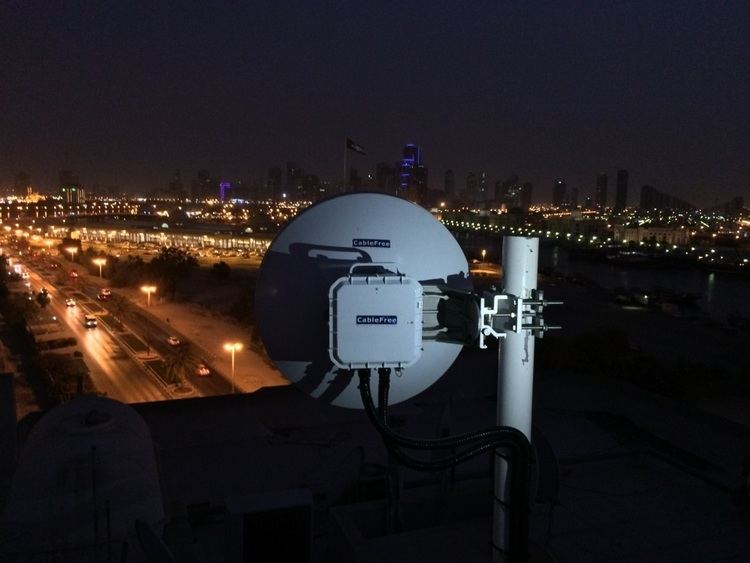Frequency range 60 – 90 GHz Related bands | Wavelength range 5 – 3.33 mm | |
 | ||
The waveguide E band is the range of radio frequencies from 60 GHz to 90 GHz in the electromagnetic spectrum, corresponding to the recommended frequency band of operation of WR12 waveguides. These frequencies are equivalent to wave lengths between 5 mm and 3.333 mm. The E band is in the EHF range of the radio spectrum.
Contents
Atmospheric effects
At these high frequencies the short wavelengths give the radiation a very directional quality, similar to visible light. Many molecules possess rotational and vibrational states excited by very specific wavelengths in this band, thus the atmospheric gasses such as oxygen, water vapor, carbon dioxide and nitrogen can absorb, and be excited causing variable beam attenuation effects dependent on meteorological and atmospheric conditions.
Applications
In October 2003, the Federal Communications Commission (FCC) ruled that spectrum at 71 to 76 GHz, 81 to 86 GHz and 92 to 95 GHz was available for high-density fixed wireless services in the United States.
The Radio Regulations of the International Telecommunication Union allow amateur radio and amateur satellite operations in the frequency range 76.000 GHz to 81.000 GHz, which is known as the 4-millimeter band.
E band for mobile backhaul
As mobile operators need more and more bandwidth, they are turning to new frequency spectrums to lower their wireless backhaul costs. Both license-exempt V band spectrum (57–66 GHz) and the newly allocated E-Band spectrum (71–76 GHz, 81–86 GHz and 92–95 GHz) has clear technological and economic advantages. The 20 GHz allocated in this spectrum allows multi-Gigabit per second capacities far exceeding the 6–38 GHz bandwidth-limited frequencies.
In the V band and E band spectrum, wireless systems can utilize the significantly larger allocated spectrum and channels to deliver multi-Gigabit data rates. This enables a simple, robust, and low cost modem and radio design. Thus, V-Band and E-Band, millimeter-wave wireless systems provide significant cost advantages over 6–38 GHz wireless systems – allowing scaling capacity to Gigabit capacities, without additional radio equipment and licensing fees
Currently available link capacities in E-Band include up to 10Gbit/s full duplex.
